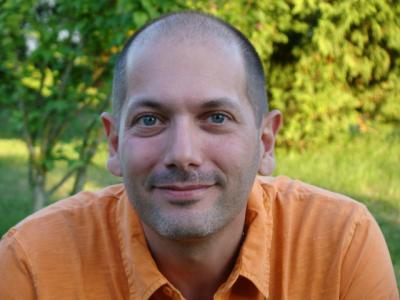My CV

I am an extragalactic astronomer, namely working on extragalactic research topics (and not an astronomer from another galaxy... I wish). I am presently working at ESO, the European Southern Observatory in Garching (Germany), as member of the Astronomy Faculty, and "en détachement" from CRAL, Centre de Recherche Astrophysique de Lyon (France), where I also hold an Astronomer Position.
After following some specialised classes in Maths and Physics, in the Quartier Latin (Paris), I obtained the right to rest and enjoy life in one of the top French engineering schools in Lyon. Life gave me the opportunity to learn about Solid and Fluid Mechanics, Materials science, Electrotechnics Tribology and many other interesting engineering-related topics and be selected to prepare a specialisation in Plasma plus Applied Physics and Astronomy at Cornell University (N. Y. state) under the supervision of Richard Lovelace and Steven Beckwith. This was an amazing experience, being in the building which hosted so many prestigious scientists, and being part of the development of a stabilising Fabry-Perot system (applying my patience and sleepless nights to design and build the electronics and mechanics that would be ultimately tested at Rochester Observatory and at the IRTF in Hawaii).Since then, I have been hopping from Paris to Lyon (France) where I conducted my PhD under the inspiring supervision of Roland Bacon and Guy Monnet, to Leiden (The Netherlands) as an EARA post-doctorate, and Munich (Germany) for a first taste of ESO. In 1997, I went back to the capital of Gaule and gastronomy for a job as a (second class, then first class) Astronomer in the roaring TIGER team. A few years passed until I triggered the evolution towards what is now called the GALPAC team at the Centre de Recherche Astronomique de Lyon. I became full Astronomer in 2006, leading GALPAC, and working as deputy of CRAL Director Bruno Guiderdoni. In 2009, I returned to ESO Garching taking the post of Head of the Office for Science, Garching. I enjoyed supporting the ESO science programmes, junior and senior science staff for a full decade. In 2019, I qualified for a 1-year Research Period, another way to say "Sabbatical" fully focusing on scientific research, and stepping down from my Office for Science position. I am now heading the Instrument Scientist Department, with a great Team who are supporting and monitoring a full suite of instruments/facilities (La Silla, VLT/I, ALMA, ELT), ensuring that top level science requirements are the guiding principles.
My work has been focused on extragalactic systems, although I remember an infamous time when I dared to study Mars and Neptune. Fortunately for me, this was at the prehistorical time when the eye of the TIGER (the first lensed-integral-field spectrograph) was still under the influence of mother Evolution. The poor beast became quickly extinct to be replaced by the successful TIGER 1.0 and its descendants (OASIS-CFHT, OASIS-WHT, SAURON), and I could thus switch to much larger (but still observable) scales, co-leading the development and advent of the Atlas3D project. I had the privilege to be involved in the development and exploitation of (and actually name) admittedly one of the best integral-field spectrographs in operation, MUSE at the VLT, led by Roland Bacon and his team.
Life being (partly) made of opportunities and luck, I have had the chance to witness the development of integral-field spectrography (in the optical/near-infrared domains) since its very beginning in the late 80's (another century), to contribute to its exploitation, analysis tools and methods,to the development and use of new modelling techniques. I had the immense privilege to meet and sometimes collaborate with many exceptional individuals, and be part of amazing science teams including SINFONI, SAURON, Atlas3D, Horizon, NGVS, MUSE (GTO), MaNGA and more recently PHANGS, MAUVE, GECKOS, and CONDOR.
Every day, I feel lucky to be a scientist, and an astronomer. Conducting scientific research is a complex and tough endeavour, but one with an emblematic privilege: the chance to work hard for your passion.